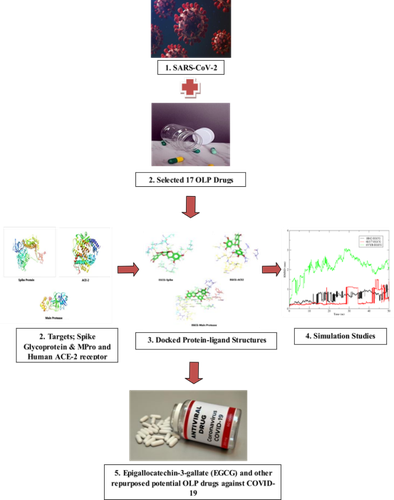-
Home
-
About JCTR
-
Gold Open Access
-
Issues
-
Editorial board
-
Author guidelines
-
Publication fees
-
Online first
-
Special issues
-
News
-
Publication ethics
-
Partners
-
Submit your manuscript
-
Submit your review report
-
Editorial Office
-

This work is licensed under a Creative Commons Attribution-NonCommercial 4.0 International License. ISSN print: 2382-6533 ISSN online: 2424-810X
Volume 8 Issue 2
Lichen Planus drugs re-purposing as potential anti COVID-19 therapeutics through molecular docking and molecular dynamics simulation approach
Unnati Soni, Pratyush Singh, Om Prakash Gupta, Shalini Gupta*, Saurabh Pratap Singh, Prerna singh, Sangeeta Singh, Krishna Mishra
Soni et al. J Clin Transl Res 2022; 8(2):3
Published online: March 1, 2022
Abstract
Background & aim: The present study intends to investigate COVID-19 by targeting their main proteins with 17 selected drugs used for treating Oral Lichen Planus (OLP) which is a chronic muco-cutaneous disorder. Here an attempt is made to gain better insight into the structure of various drugs targeting specific proteins which will be helpful in developing drugs useful for therapeutic and preventive measures.
Method: In silico studies, molecular docking and molecular dynamic simulations were peformed to repurpose the therapeutic drugs (n = 17) which were used to treat OLP against COVID-19. In addition, the maximum binding affinities of the key protein spike glycoprotein, main-protease (Mpro) of coronavirus and Angiotensin Converting Enzyme-2 (ACE-2) in human body were evaluated with the selected drugs.
Results: Epigallocatechin-3-gallate (EGCG) showed the highest docking values among the drugs selected for repurposing. Among the target proteins, EGCG has shown maximum binding affinity with ACE-2 receptor. Further, according to the molecular dynamic simulation studies, EGCG has shown the least conformational fluctuations with Mpro.
Conclusion: EGCG can be a potential inhibitor drug which can bind with ACE-2 receptor thus inhibiting the interaction of mainly Mpro protein and spike glycoprotein of SARS-CoV-2.
Relevance for patients: EGCG, a natural compound shows antiviral potential having considerably high affinity and stability with SARS-CoV-2. It might be further employed as a lead drug against selective inhibitors of SARS-CoV-2 for the therapeutic management of COVID-19 patients after necessary clinical trials

DOI: http://dx.doi.org/10.18053/jctres.08.202202.003
Author affiliation
1. Department of Applied Sciences, Indian Institute of Information Technology, Allahabad, UP, India.
2. Department of Oral Pathology & Microbiology, MaharanaPratap Dental College, Kanpur, India.
3. Department of General Surgery, Career Institute of Medical sciences, Lucknow, India
4. Department of Oral Pathology & Microbiology, King George’s Medical University, Lucknow, India
*Corresponding Author
Shalini Gupta
Department of Oral Pathology & Microbiology, King George's Medical University, Lucknow,Uttar Pradesh, India – 226003.
Tel: 9453556510
Email: sgmds2002@yahoo.co.in
Handling editor:
Michal Heger
Department of Pharmaceutics, Utrecht University, the Netherlands
Department of Pharmaceutics, Jiaxing University Medical College, Zhejiang, China

